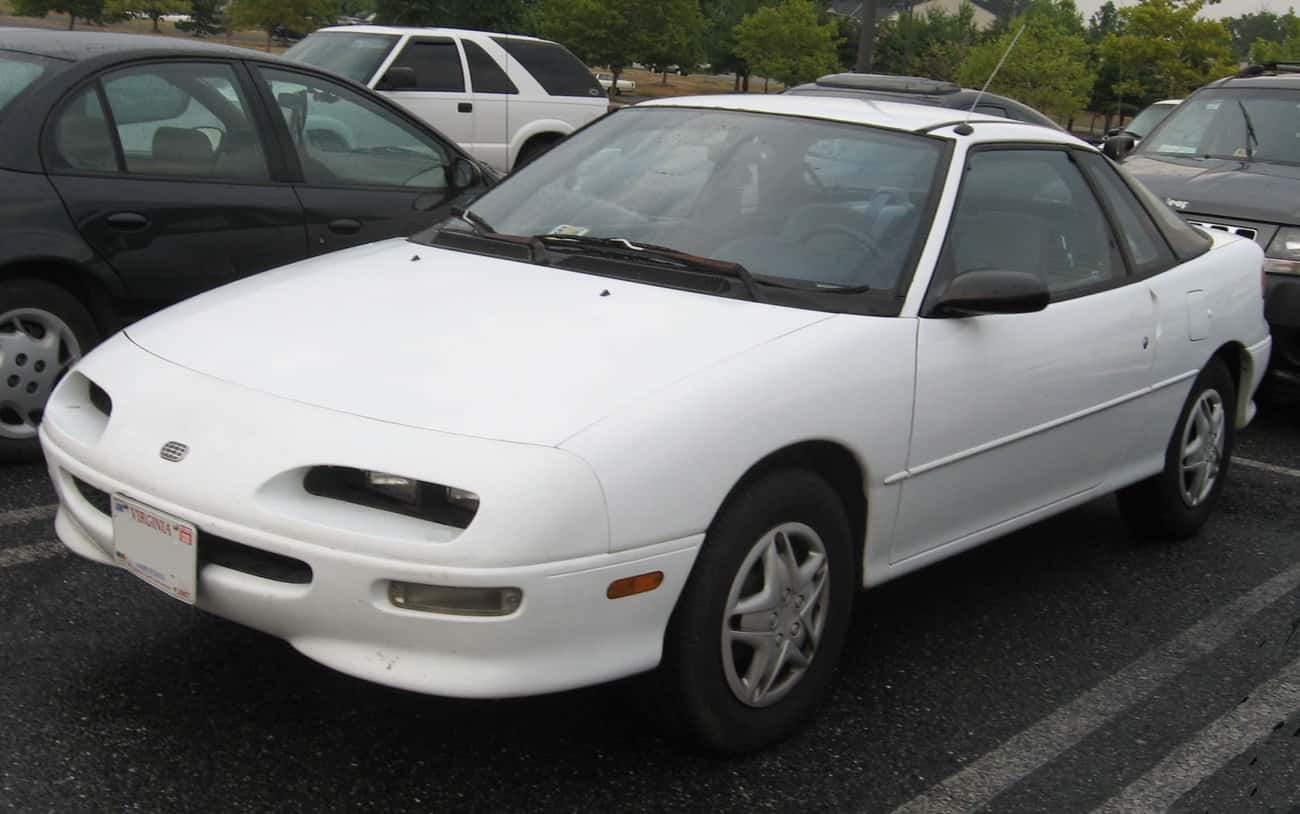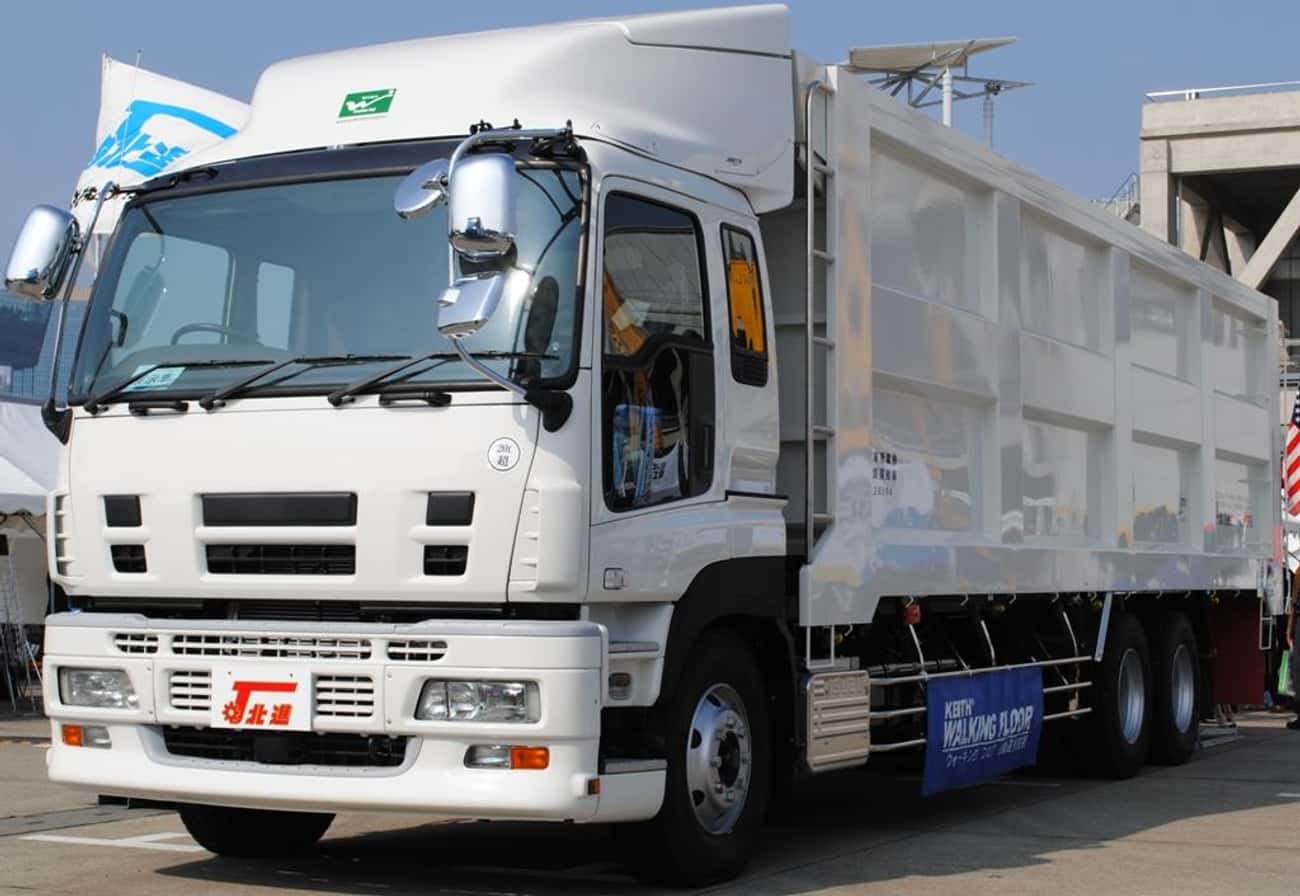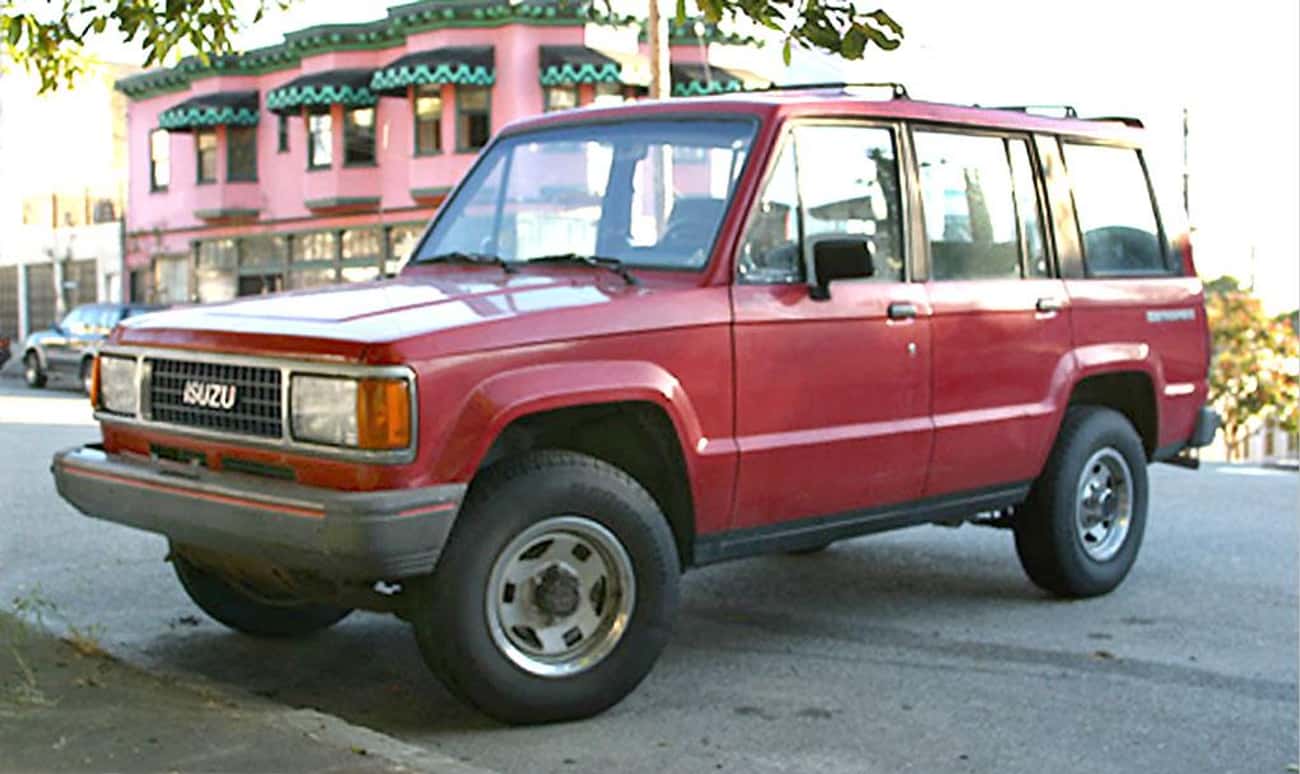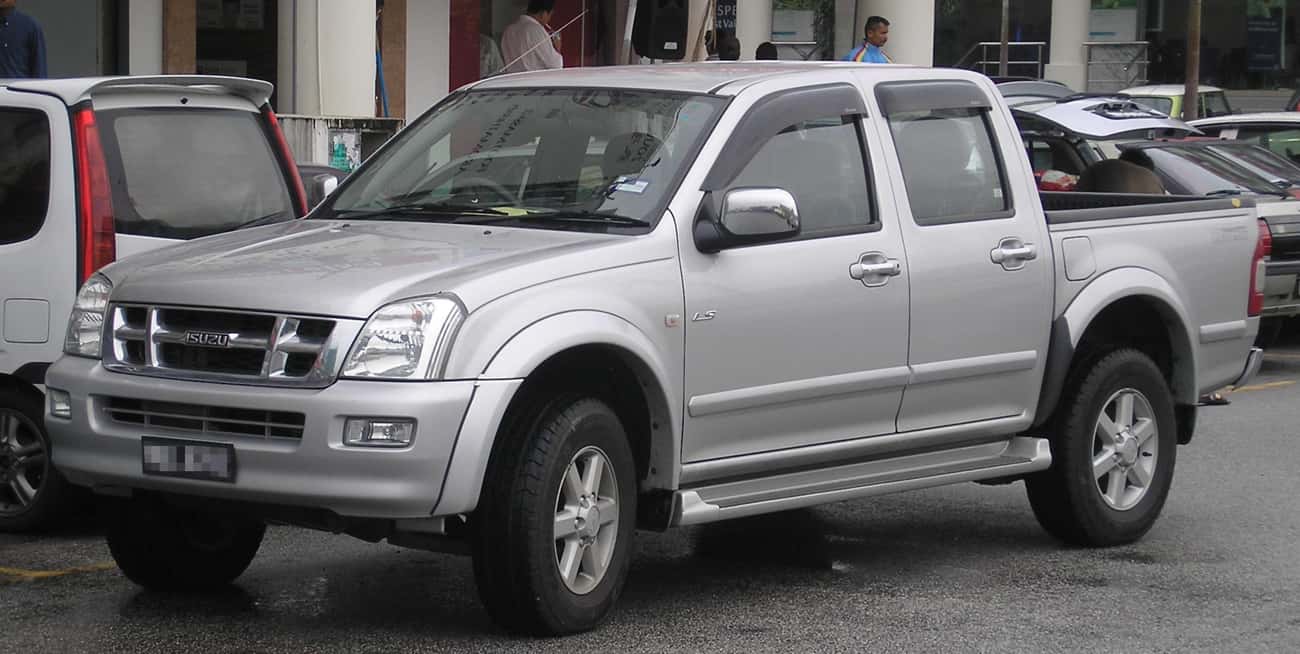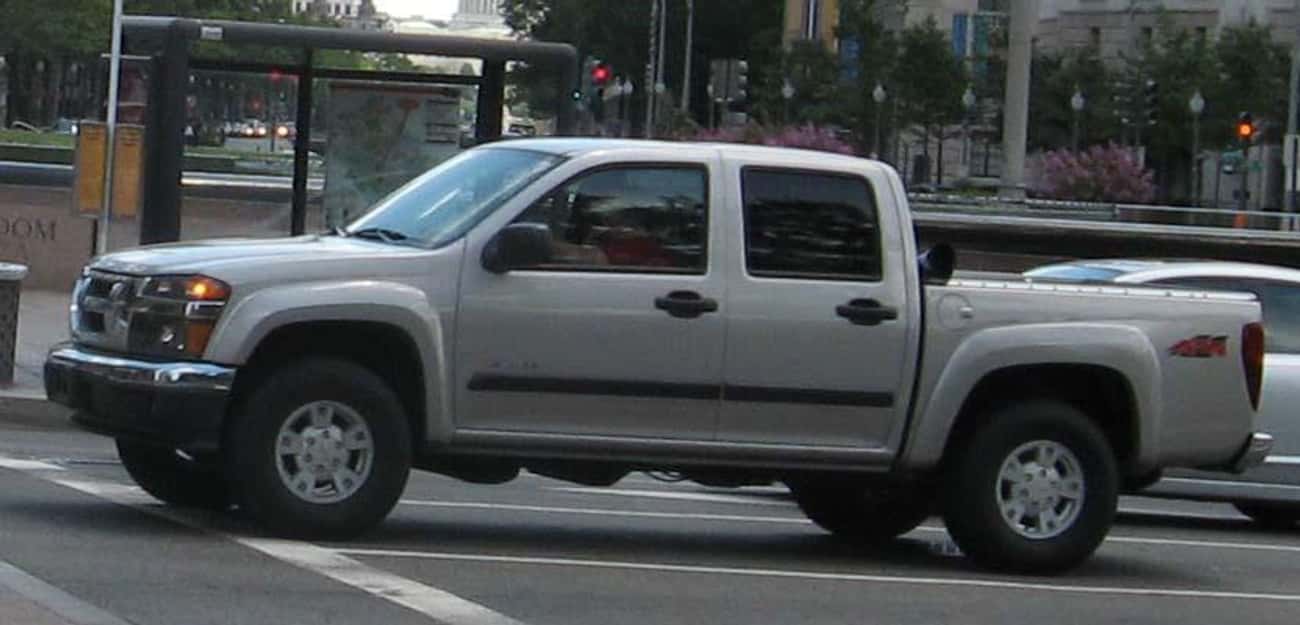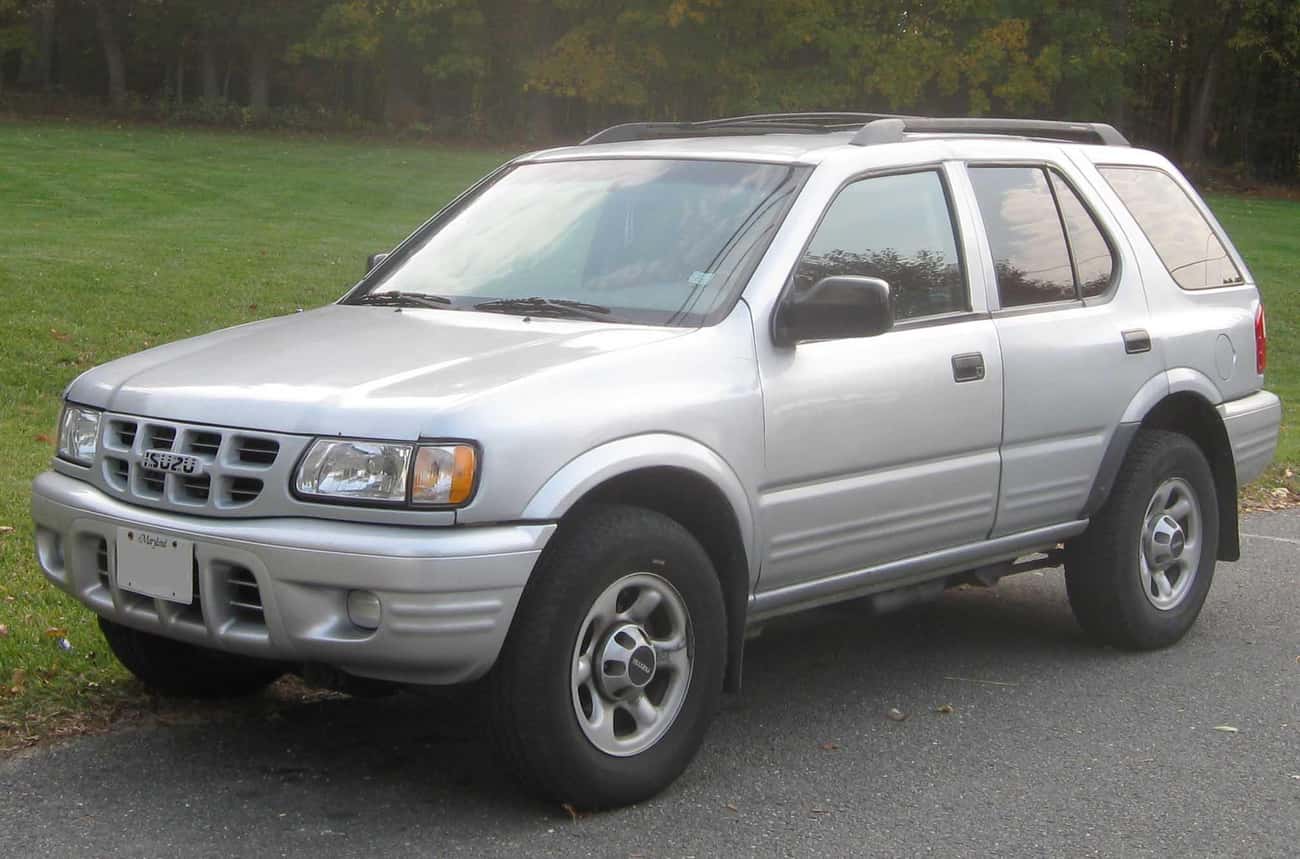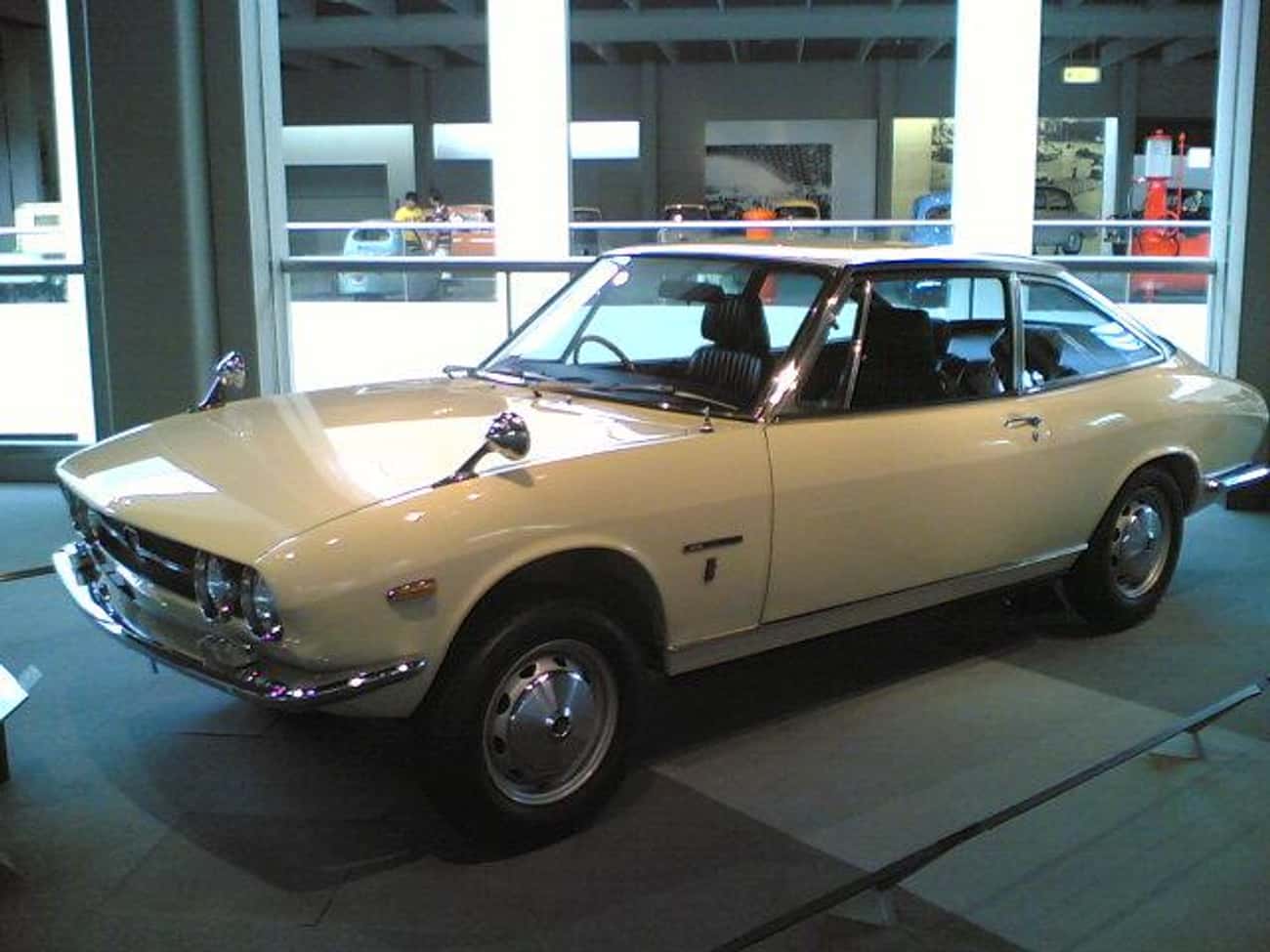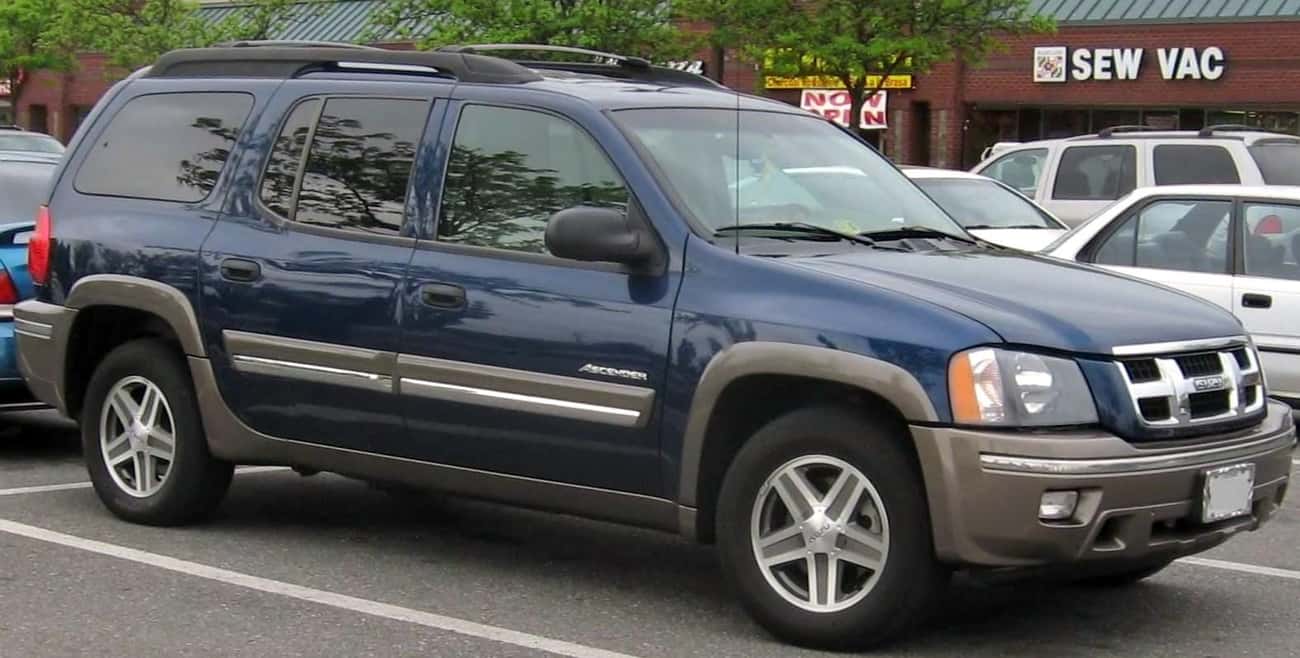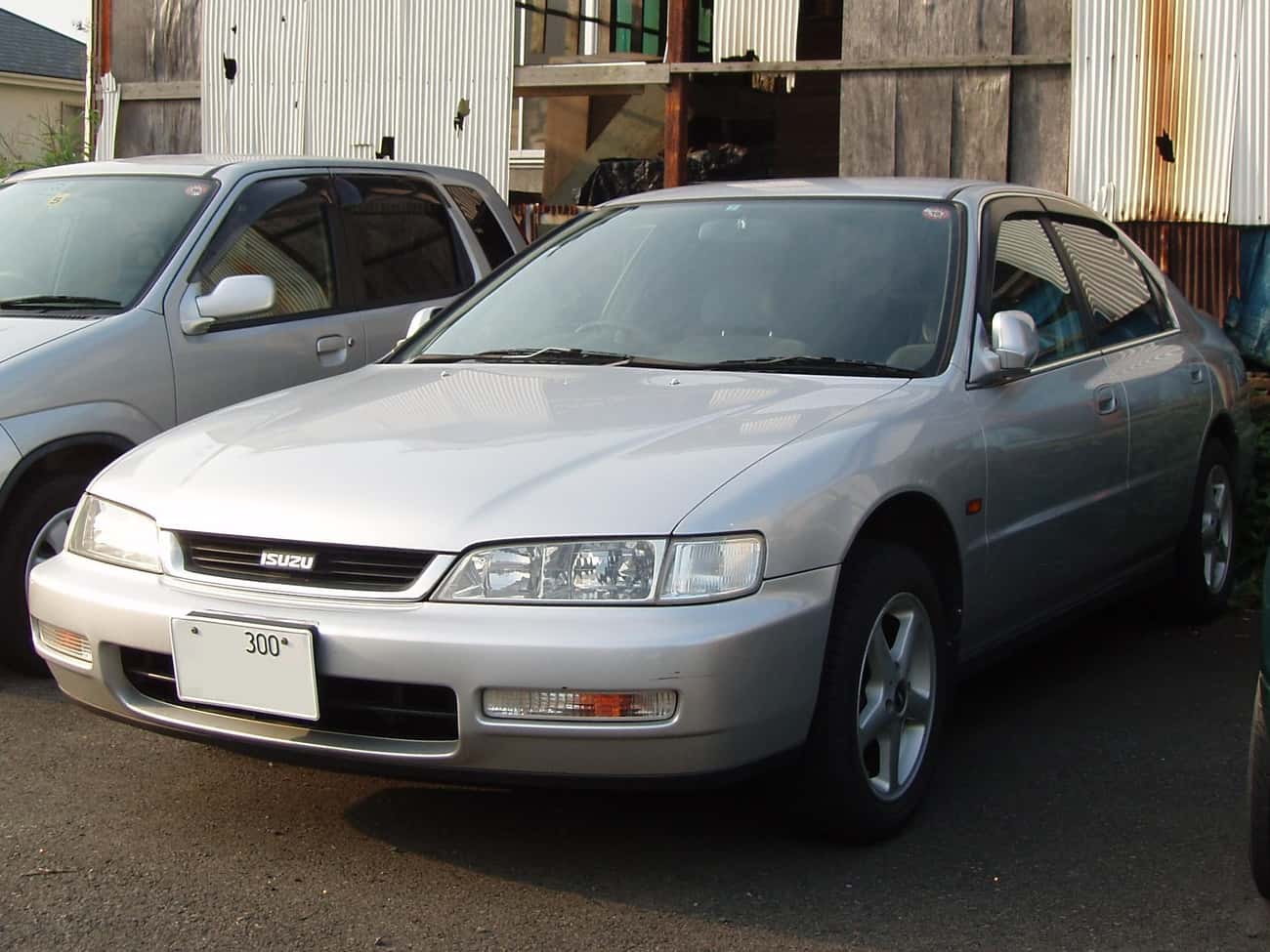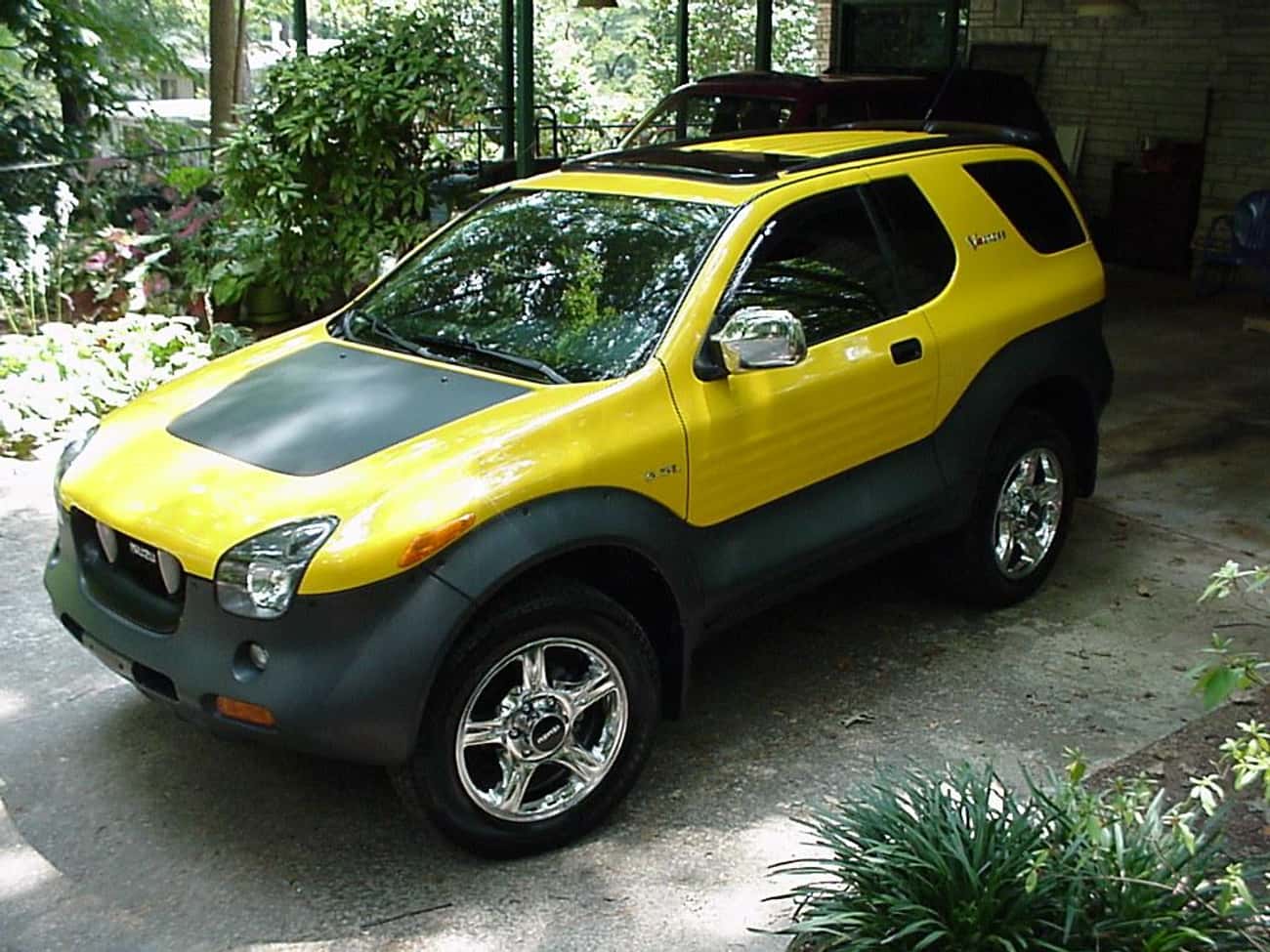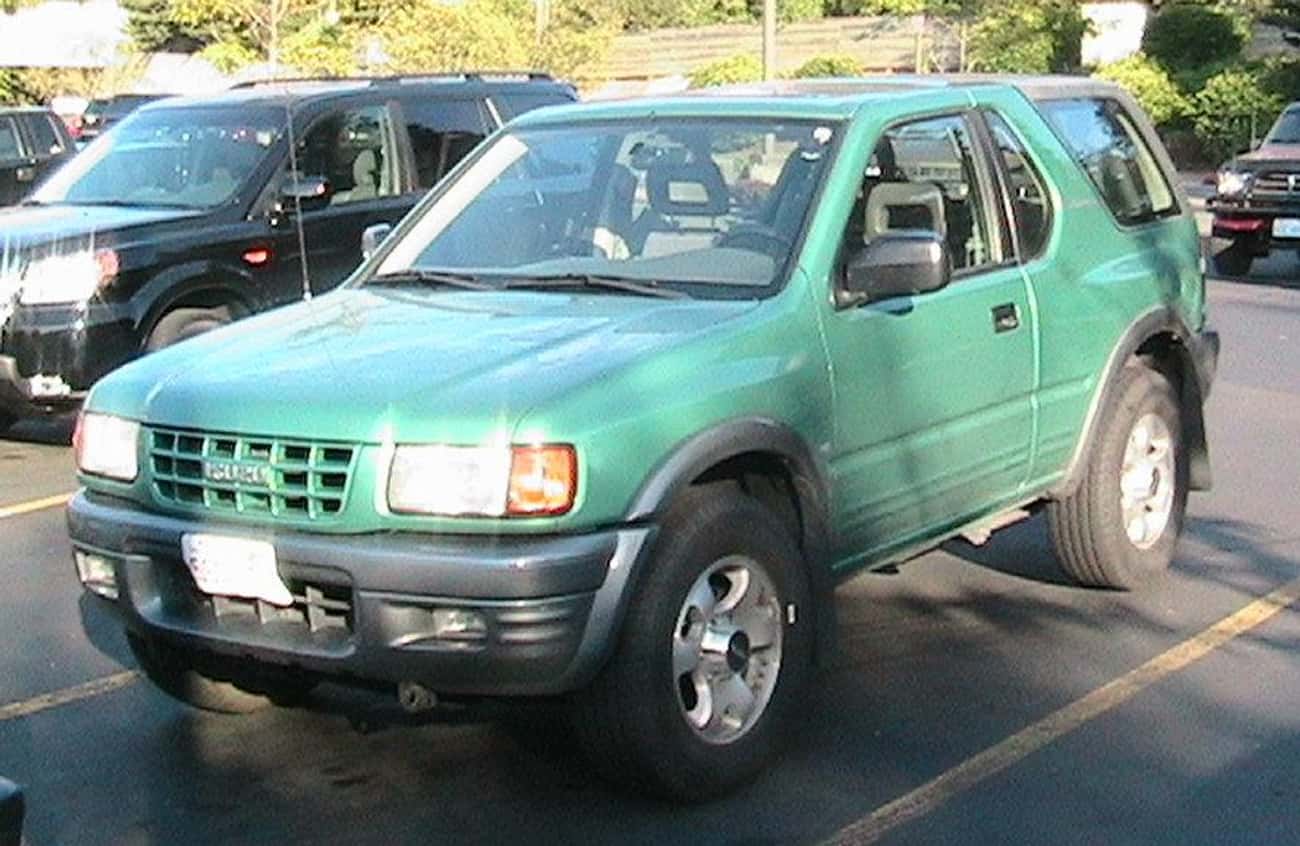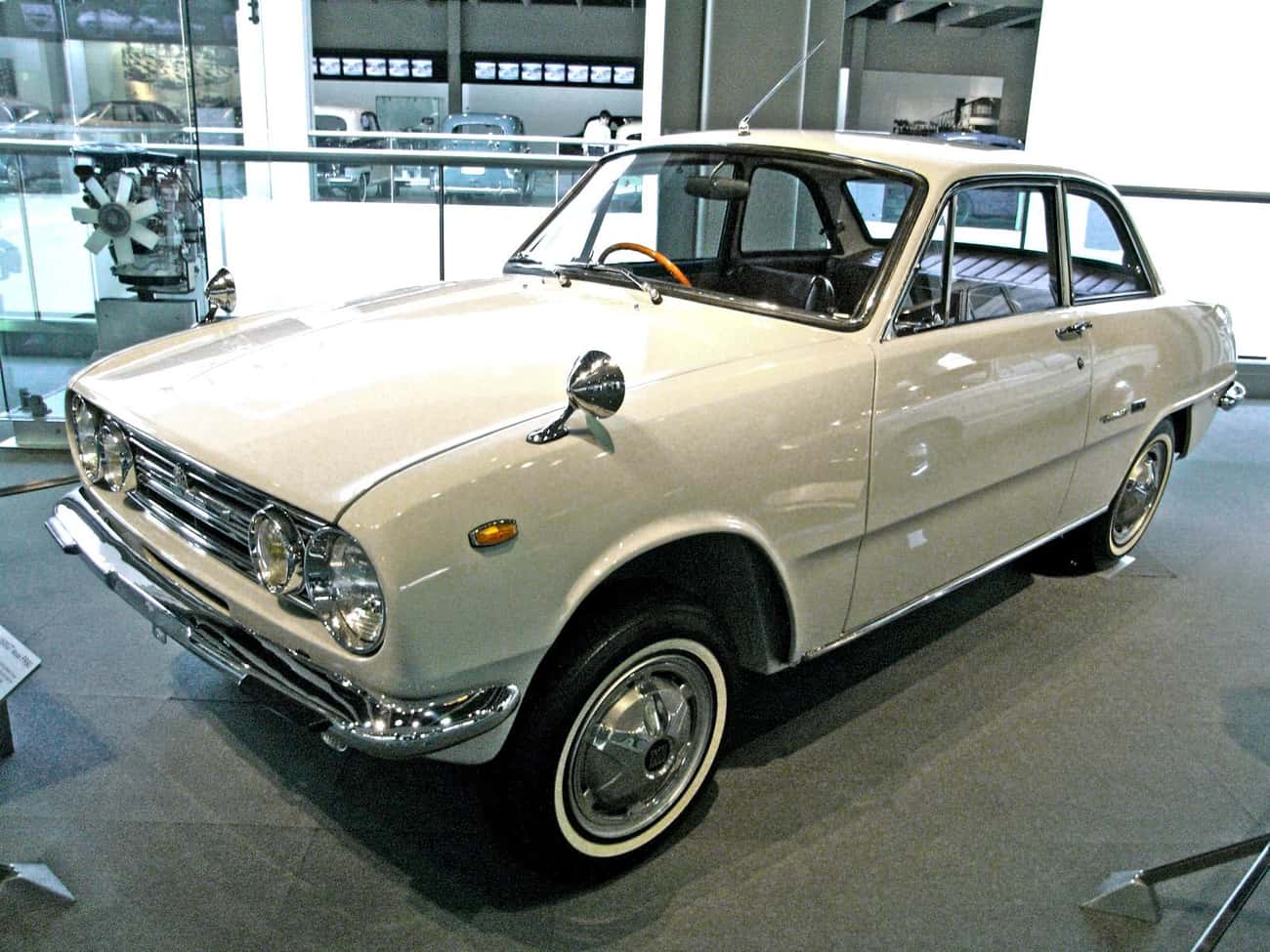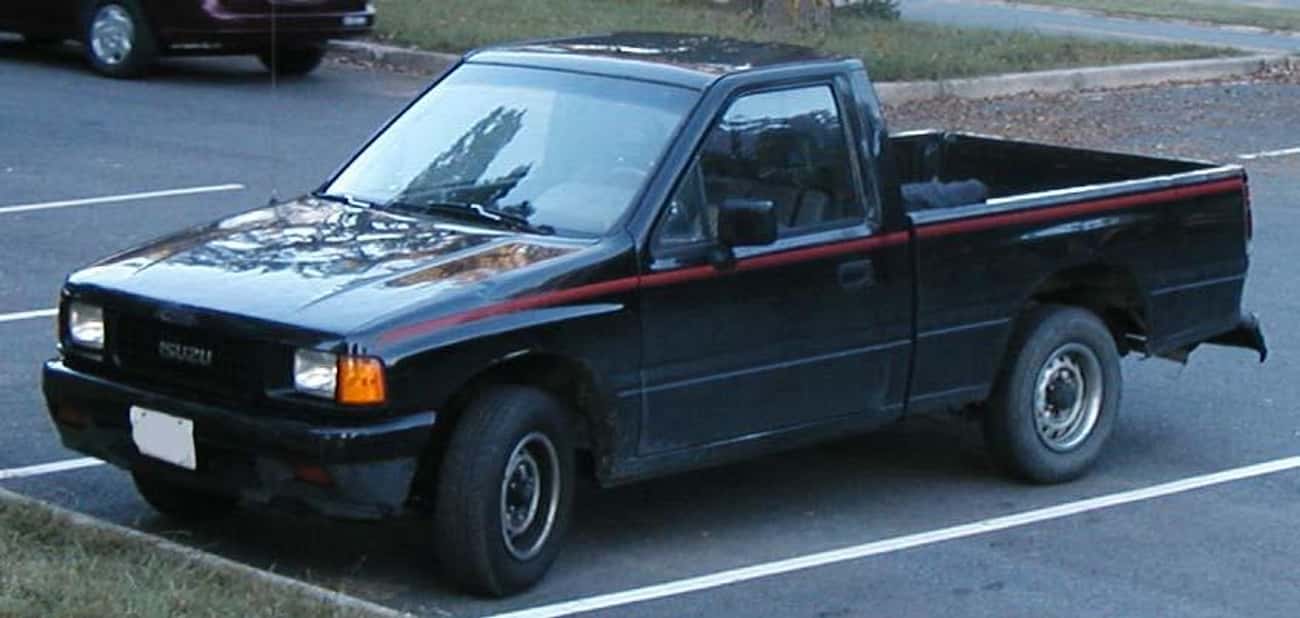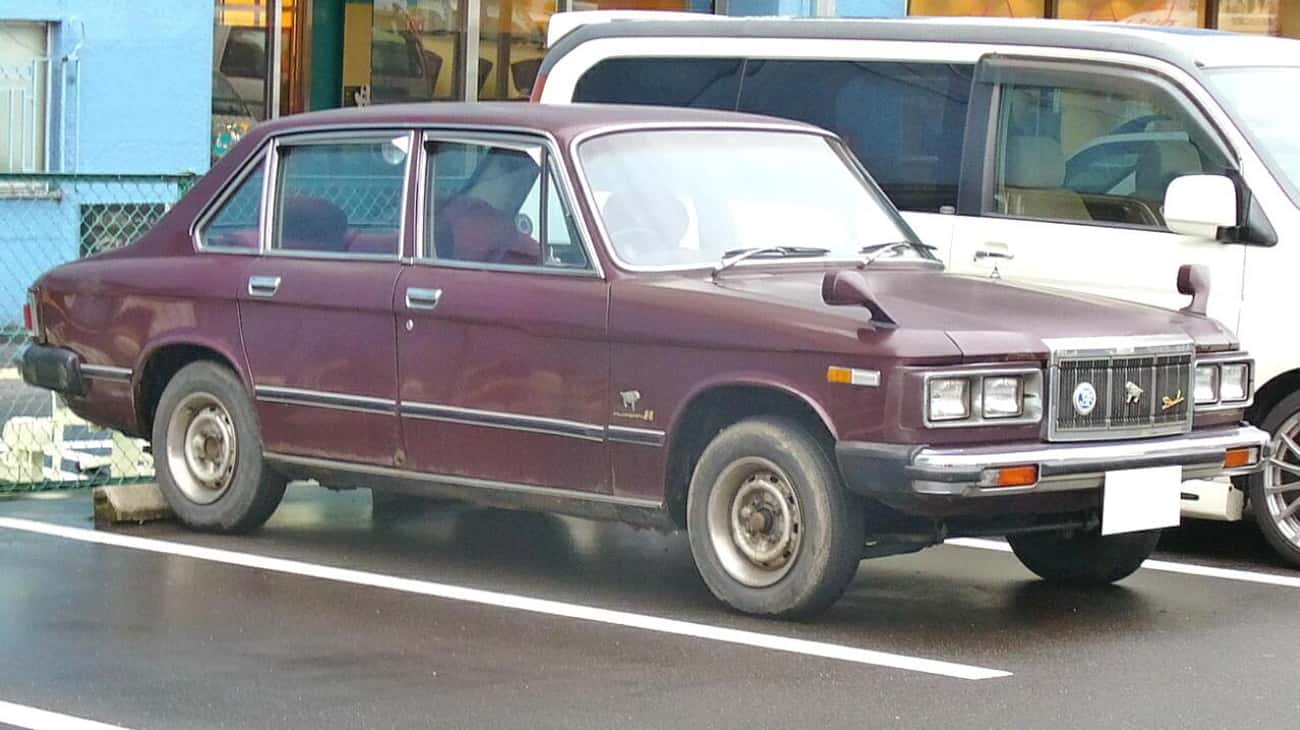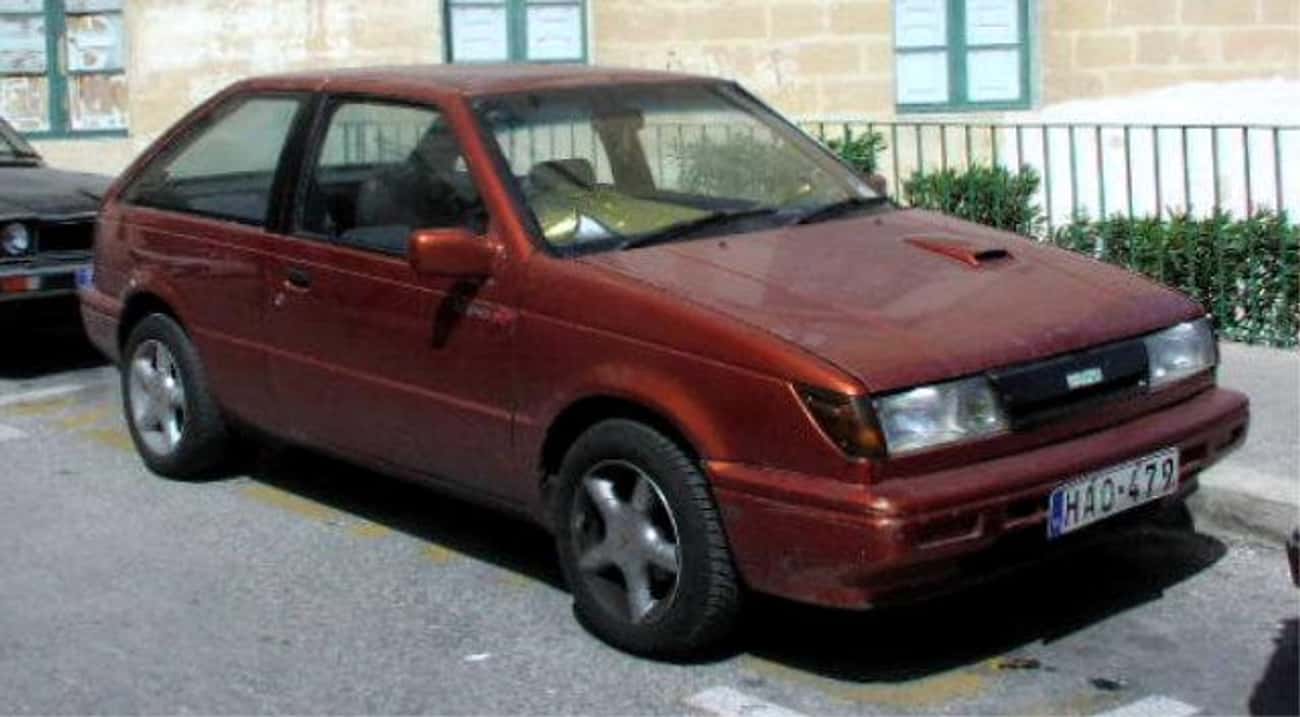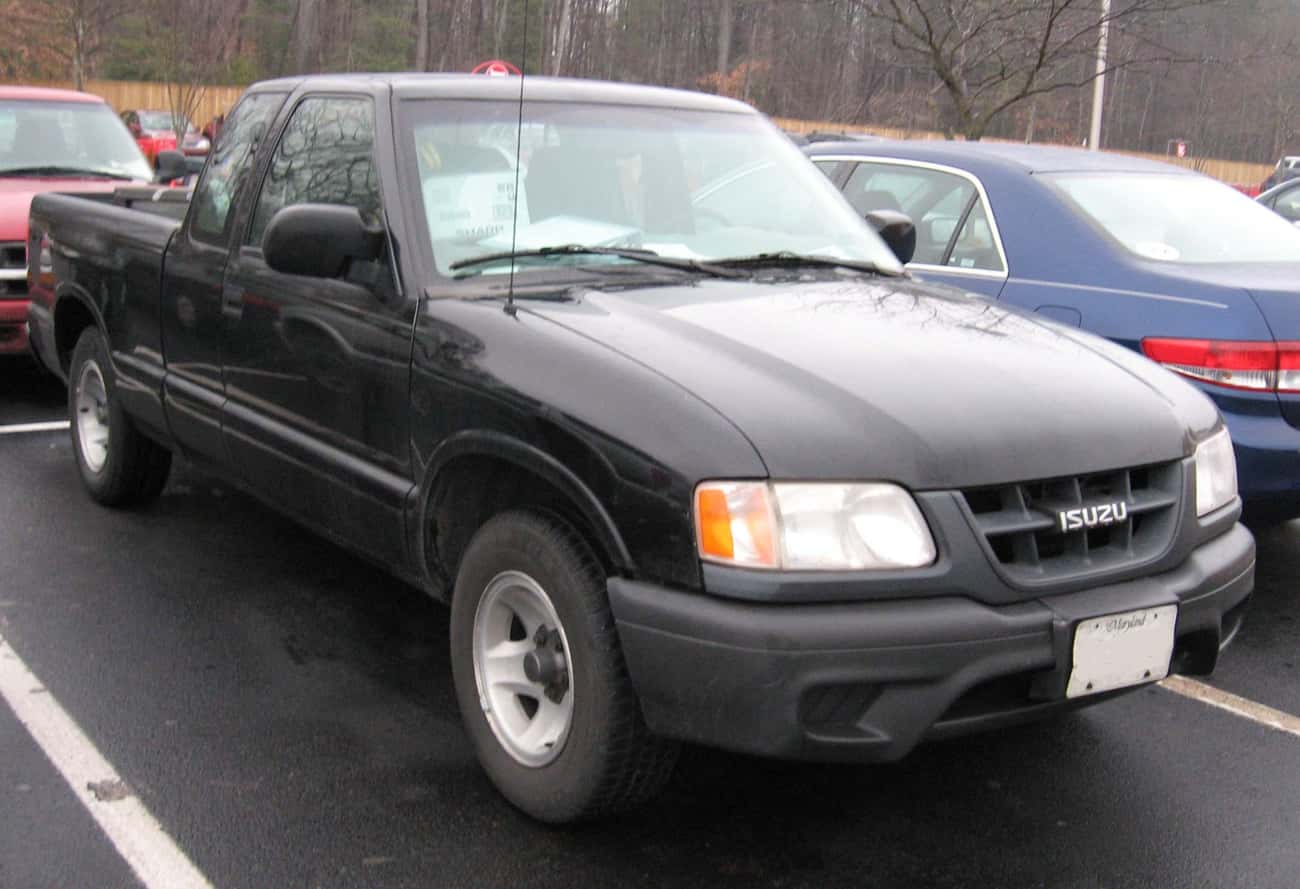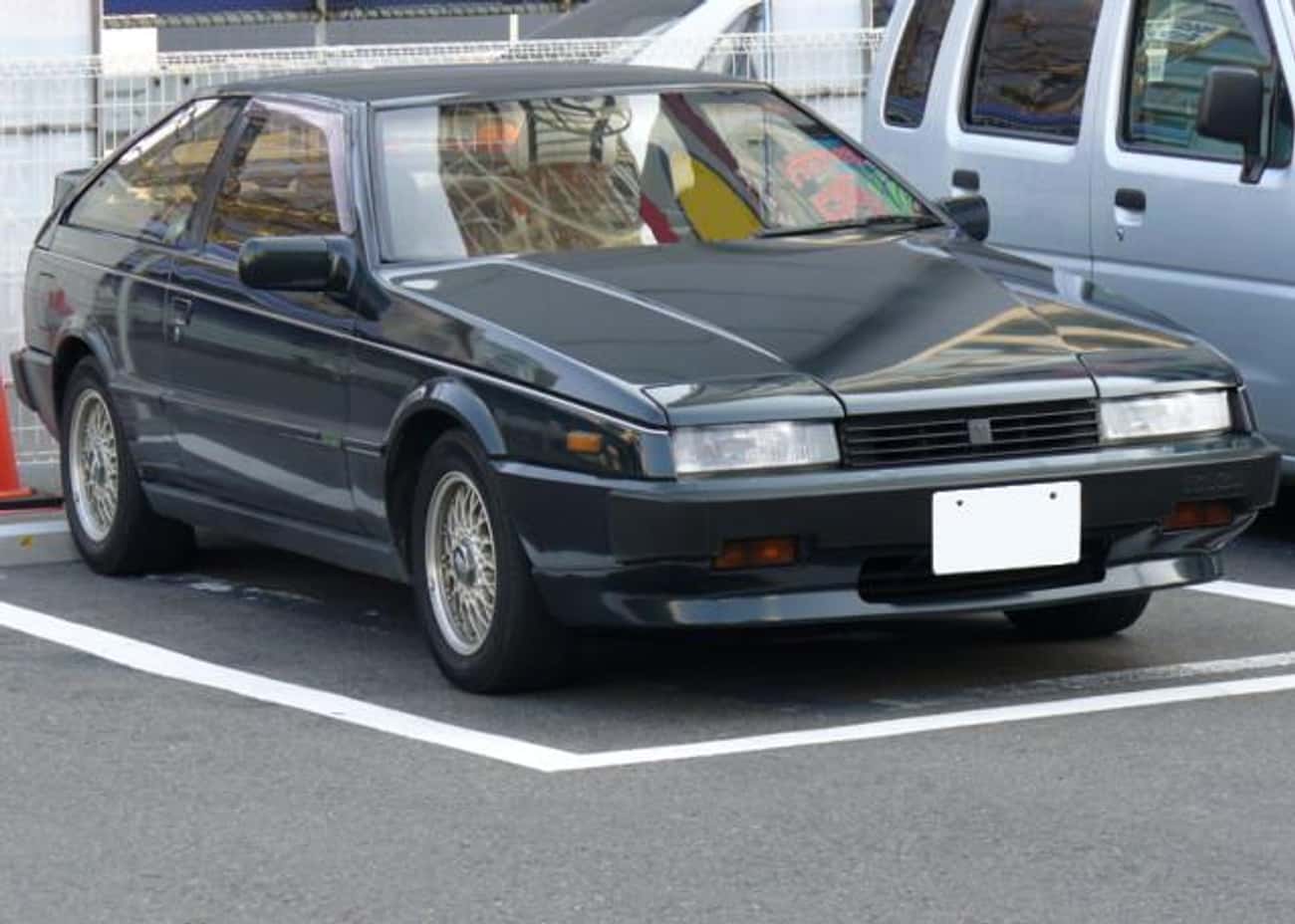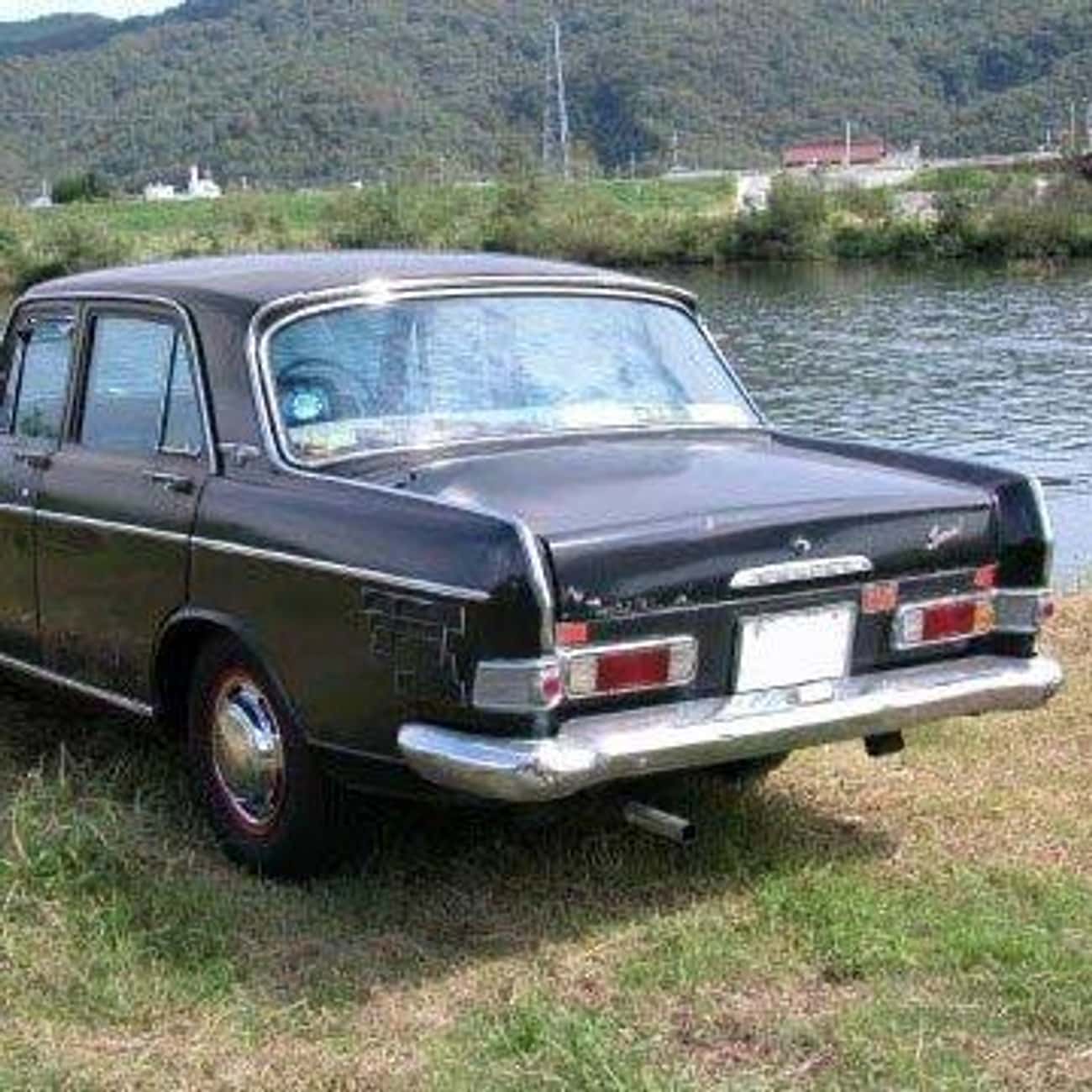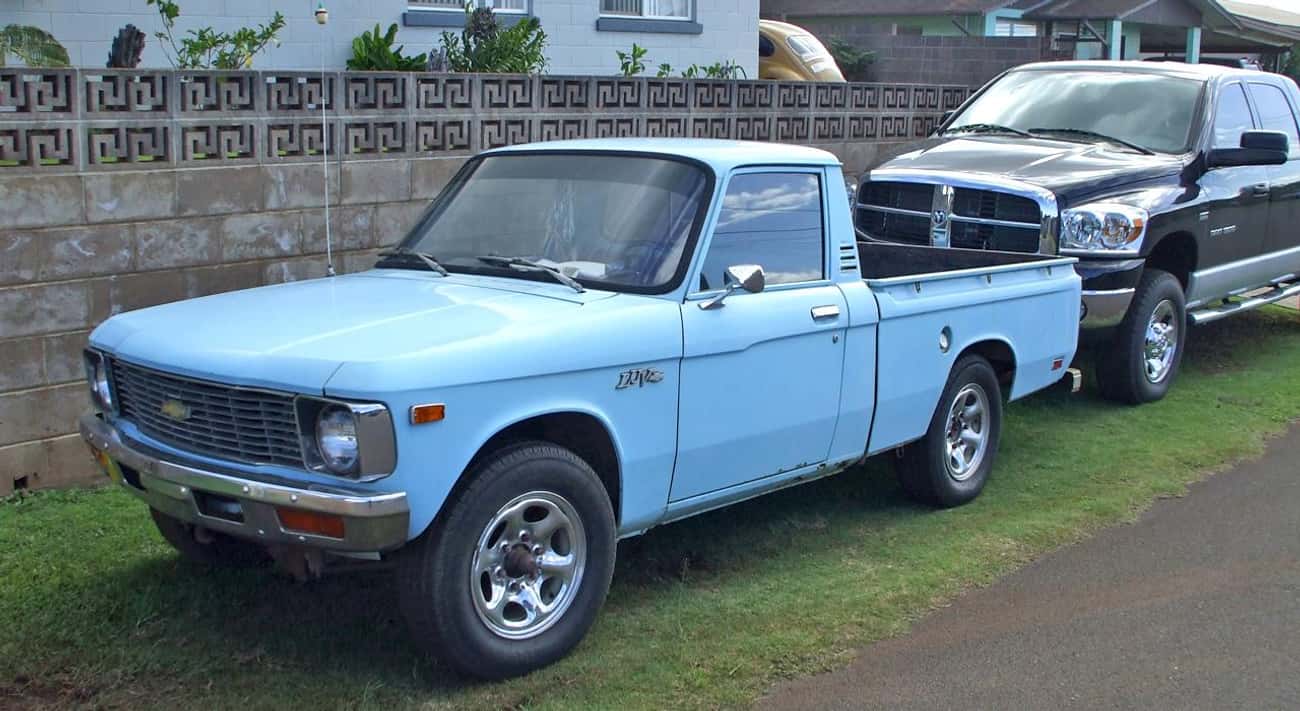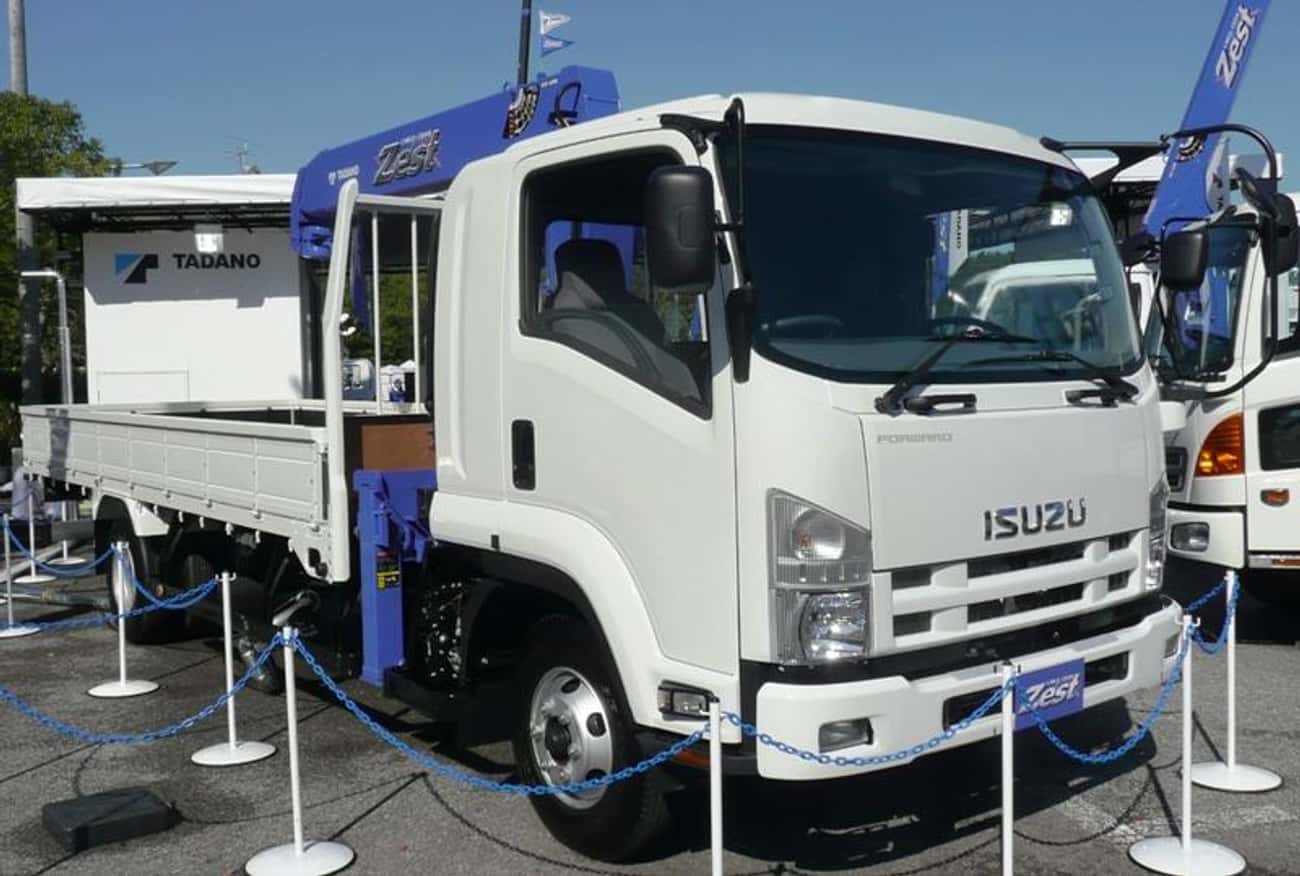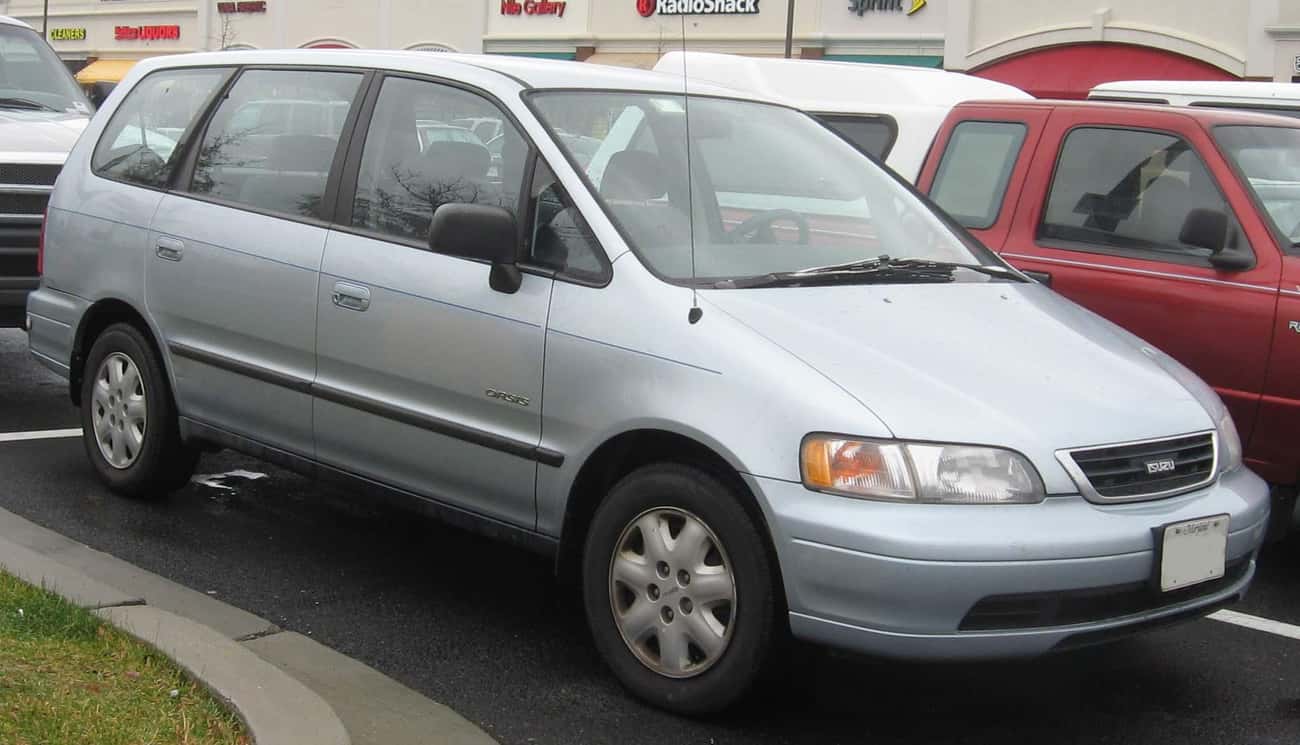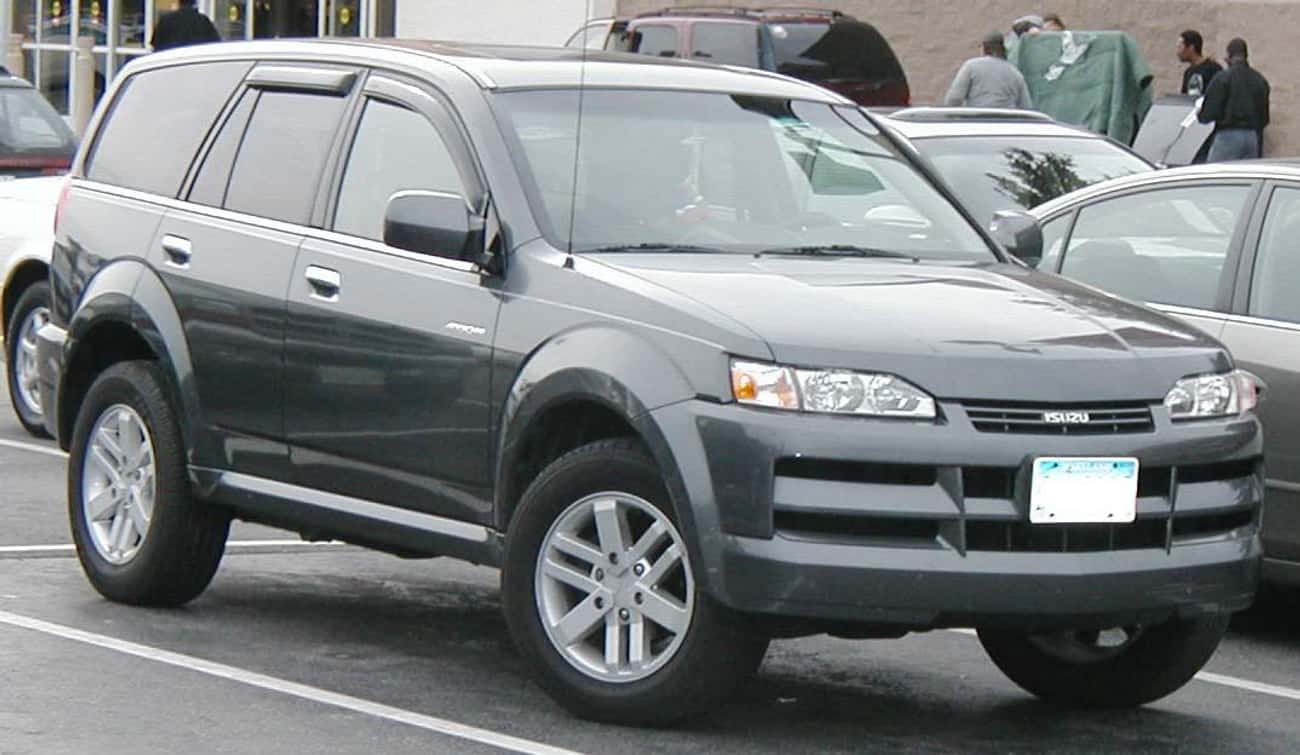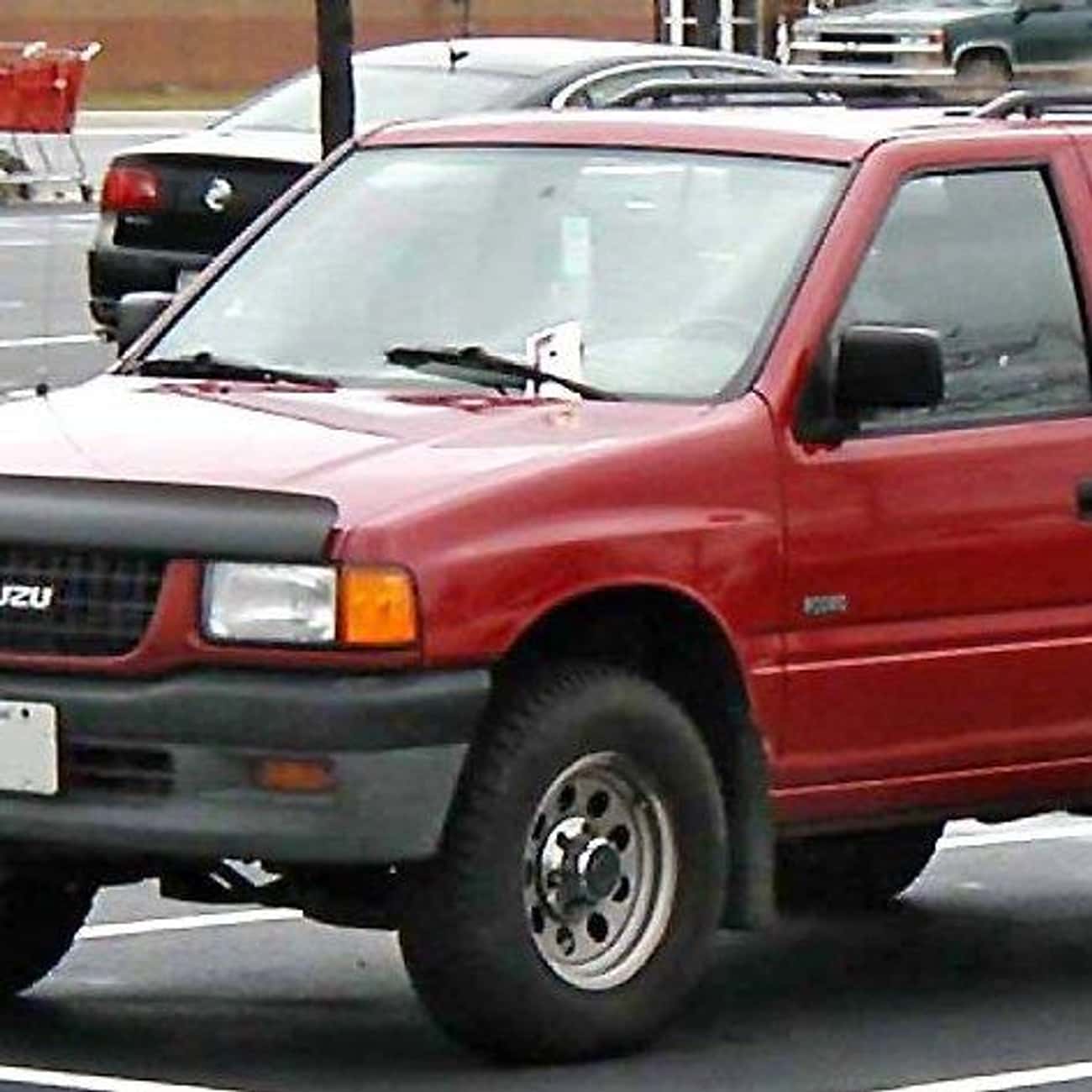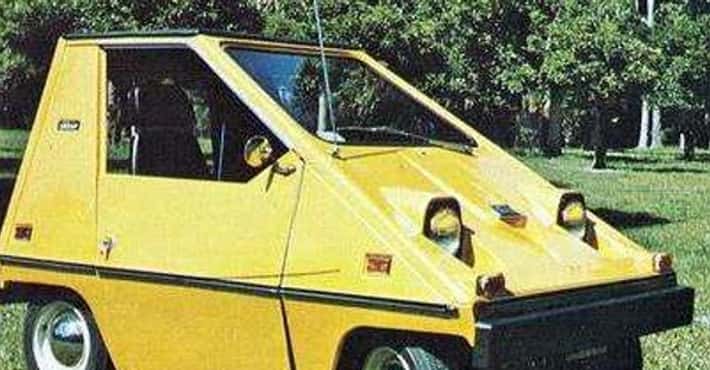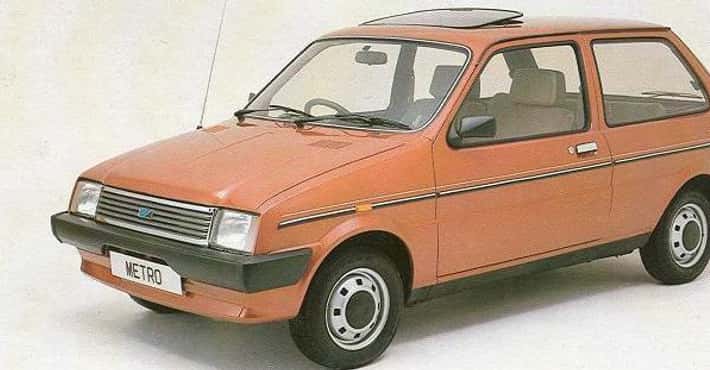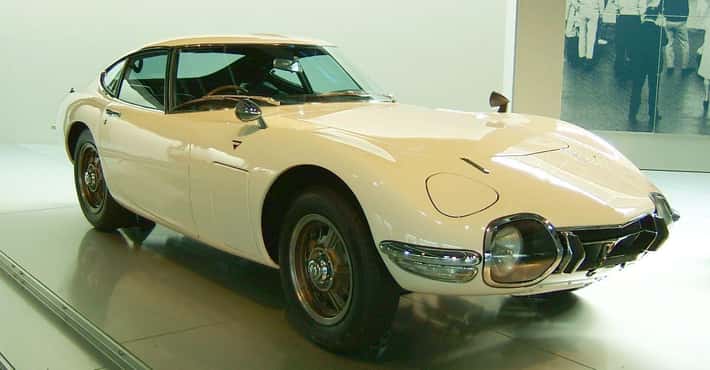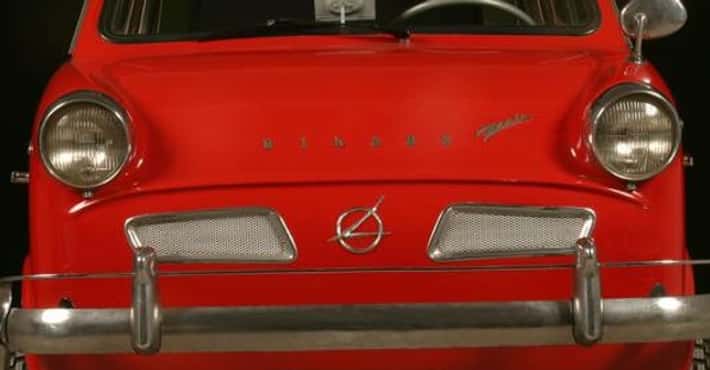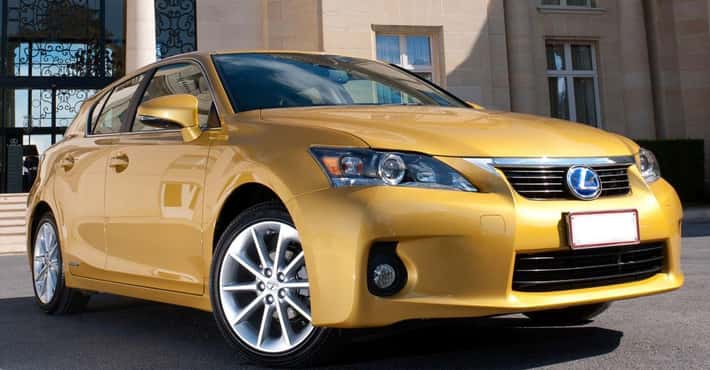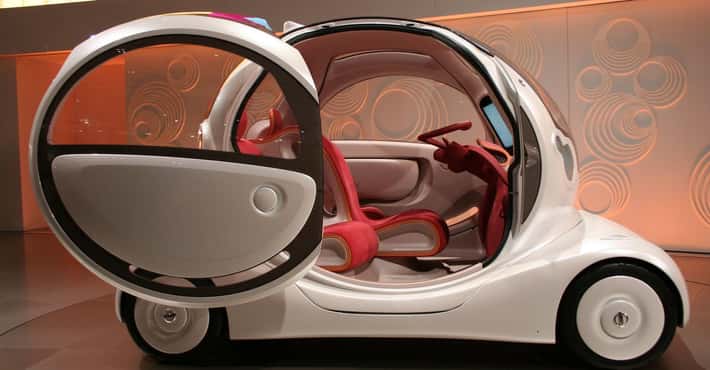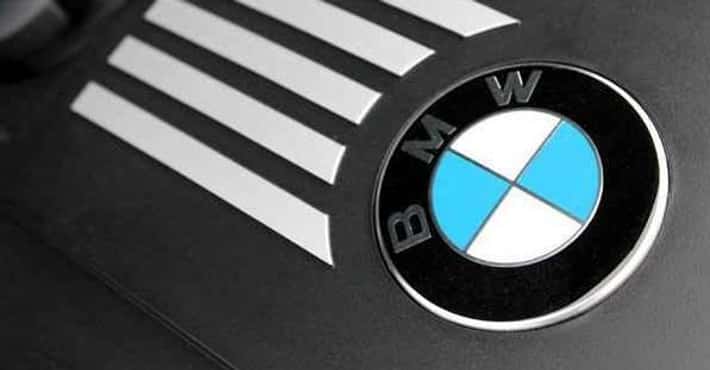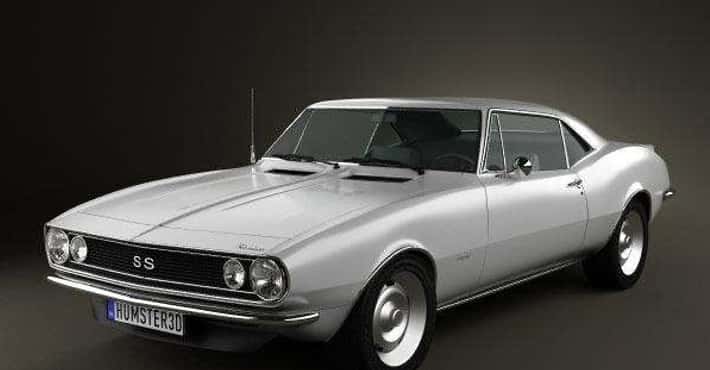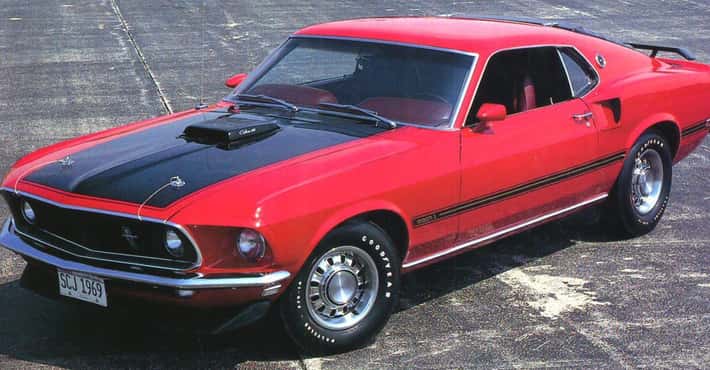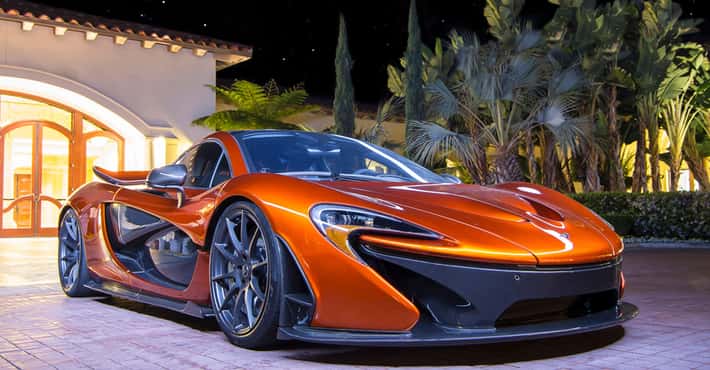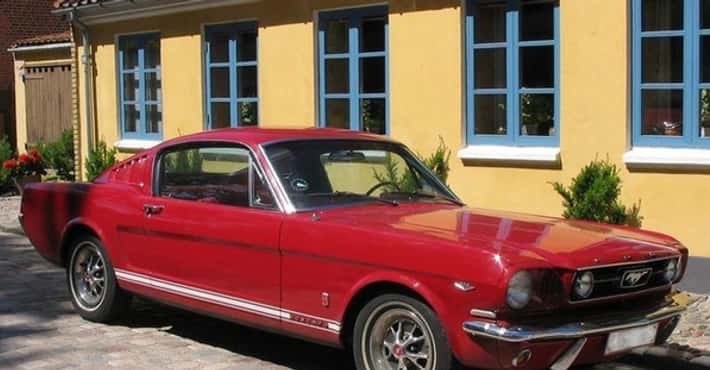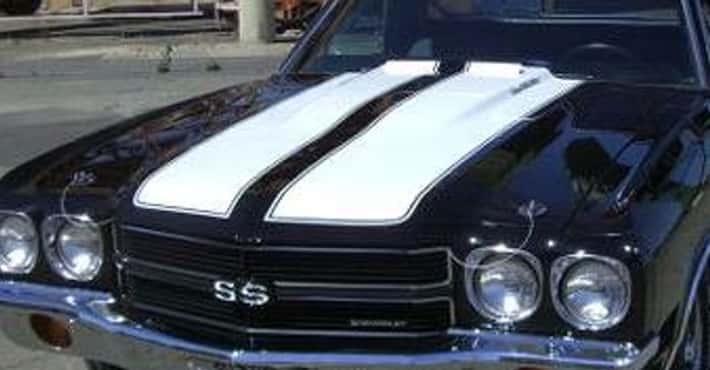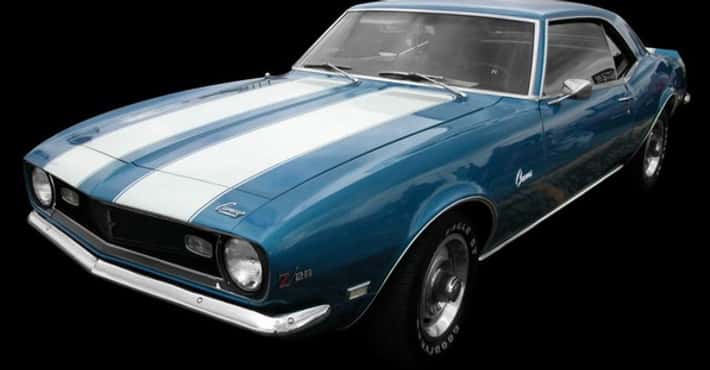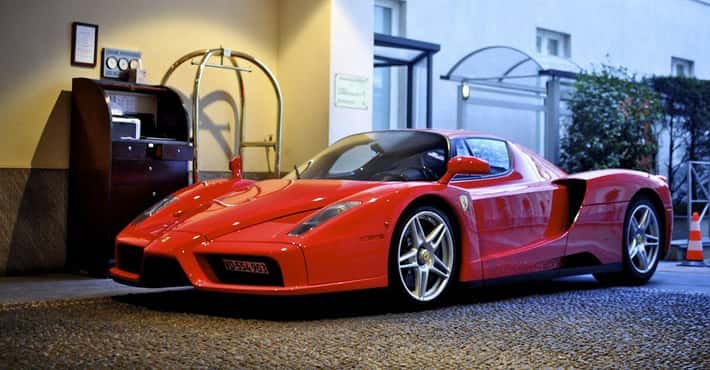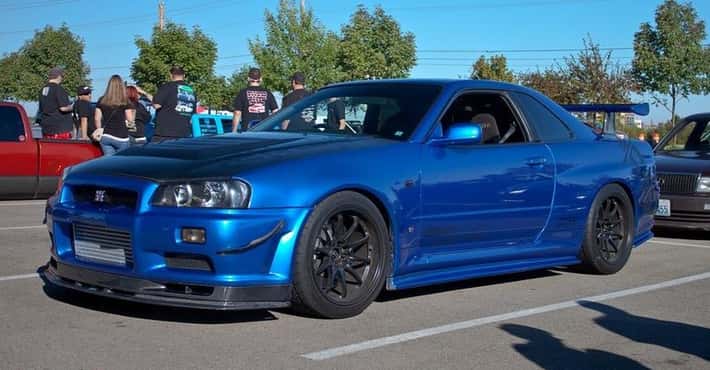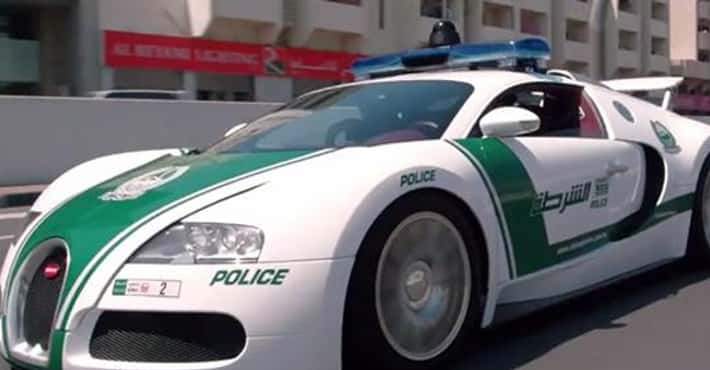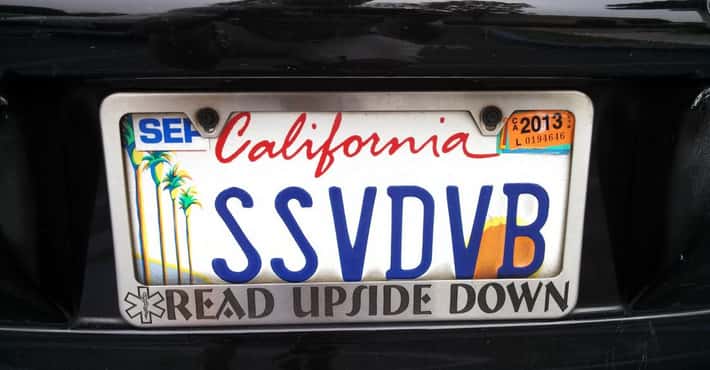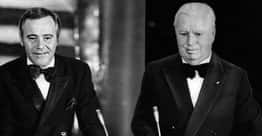Full List of Isuzu Models
- Photo: Metaweb (FB) / Public domainThe Geo Storm is a sport compact car manufactured by Isuzu and sold in the United States by General Motors from 1990 through 1993 as part of GM's Geo line of inexpensive automobiles. The same vehicles, with minor variations, were sold in Canada in the 1992 and 1993 model years only. The Storm was intended to be a budget car with the look and feel of a sports car. It can be considered to have replaced the related Geo Spectrum, which was sold in hatchback and sedan, although it was only sold in two-door hatchback and station wagon forms. The Geo Storm was a rebadged version of the sporty, second generation Isuzu Impulse minus some of that car's more expensive features. The Storm was sold in Japan as the PA Nero and related Gemini Coupe, Impulse. The Storm lacked the Impulse's Lotus-tuned suspension as well as the Impulse's optional turbocharger and all-wheel drive drivetrain. Although they were essentially the same car, sales of the Storm were much stronger than those of the Impulse—indeed, the Storm sold better than most small GM cars of that era.
- Photo: Metaweb (FB) / Public domainThe Isuzu Giga is a line of heavy-duty commercial vehicle originally introduced by Isuzu in 1994. The range is mostly made up of full-size trucks and was previously known as the 'Isuzu Heavy-Duty Truck', and replace the Isuzu 810. Most full-size models of the truck are distinguishable by a front 'Giga' and 'CXZ' badge, but the common Isuzu badge is usually used on the rear. in Global markets, its principal Japanese competitors are Mitsubishi Fuso Super Great, Nissan Quon and Hino's Profia. Its former competitor was the Nissan Diesel Big Thumb. Outside of Japan, the truck series are in the "C" and "E", for Comfort and Economic respectively.
- The Isuzu Trooper is a mid-size SUV that was produced by the Japanese automaker Isuzu between 1981 and 2005. It was exported internationally as the Isuzu Bighorn, Isuzu Trooper, Isuzu Trooper II, Caribe 442, Acura SLX, Chevrolet Trooper, Subaru Bighorn, SsangYong Korando Family, Honda Horizon, Opel/Vauxhall Monterey, Holden Jackaroo, and Holden Monterey. There were two generations of Trooper, the first being produced from 1981–1991, and the second being produced from 1991–1997 with a substantial refresh in 1998 until the cessation of production in 2005. It began as a rather basic and somewhat underpowered on- and off-road vehicle, offered only with four-cylinder motor, five-speed manual transmission, and part-time four-wheel drive. The first generation evolved to add both amenities and luxuries, including optional air-conditioning, power windows, and a more powerful V6 engine. The second generation was more refined yet, available in two-wheel drive as well as four.
- Photo: Metaweb (FB) / CC-BY-SA-2.5The Isuzu D-Max is a pickup truck built by automaker Isuzu since 2002. It shares the same platform with several General Motors mid-size trucks in the United States such as the Chevrolet Colorado, GMC Canyon and Isuzu i-Series. The Chevrolet Colorado name is also applied to a rebadged version of the D-Max in the Middle East and Thailand, although not identical to the American version. The original D-Max is sold alongside the Chevrolet Colorado in the Thai market where they are both built. In Australasia between 2003 and 2008, the D-Max was marketed as the Holden Rodeo, but has since been relaunched as the Holden Colorado. The Isuzu D-Max itself was also introduced in Australia during 2008, selling alongside the Holden offering. In the United Kingdom, the D-Max is offered there as the Isuzu Rodeo.
- Photo: Metaweb (FB) / Public domainThe Isuzu i-Series mid-size pickup truck line was manufactured by Isuzu from 2005 to 2008. Launched at the 2005 New York International Auto Show, for the 2006 model year, the i-Series replaced the Isuzu Hombre, which had been out of production since 2000. Like the Hombre, the i-Series shared its platform with General Motors mid-size pickups. It was built at the same plant in Shreveport, Louisiana, which produces the Chevrolet Colorado and GMC Canyon, which were in turn developed off the cab and chassis of the Thai-built Isuzu D-Max by GM, Isuzu, and GM do Brasil. The sales for the i-Series were poor, with just 1,377 sold from the start of production through February 2006 according to Automotive News. As part of Isuzu's withdrawal from the United States market after the 2009 model year, the i-Series was discontinued, replaced by the related Hummer H3T for GM's Hummer brand. Two models were available in 2006: ⁕i-280 - 2.8 L Atlas LK5 I4 ⁕i-350 - 3.5 L Atlas L52 I5 Two models were available in 2007: ⁕i-290 - 2.9 L Atlas LLV I4 ⁕i-370 - 3.7 L Atlas L5R Two models were available in 2008: ⁕i-290 - 2.9 L Atlas LLV ⁕1-370 - 3.7 L Atlas L5R I5
- Photo: Metaweb (FB) / Public domainThe Isuzu MU is a mid-size SUV that was produced by the Japan-based manufacturer Isuzu. The three-door MU was introduced in 1989, followed in 1990 by the five-door version called Isuzu MU Wizard, both of which stopped production in 1998 to be replaced by a second generation. This time, the five-door version dropped the "MU" prefix, to become the Isuzu Wizard. The acronym "MU" is short for "Mysterious Utility". Isuzu manufactured several variations to the MU and its derivates for sale in other countries. The short-wheelbase version was sold as the Isuzu MU and Honda Jazz in Japan, with the names Isuzu Amigo and later Isuzu Rodeo Sport used in the United States. Throughout continental Europe, the three-door was called Opel Frontera Sport, with the Vauxhall Frontera Sport title used in the United Kingdom, and Holden Frontera Sport in Australasia. The long-wheelbase version was available as the Isuzu Wizard in Japan, and in North America as Isuzu Rodeo and the Honda Passport. Opel, Vauxhall, and Holden each also sold rebadged versions of the five-door as the Opel Frontera, Vauxhall Frontera, and Holden Frontera.
- The Isuzu 117 Coupé is a compact Gran Turismo type 2-door fastback coupé which was produced by the Japanese automobile manufacturer Isuzu between 1968 and 1981. 117 was a codename for a common development program of Isuzu mid-size cars, involving a coupé, sedan and station wagon. The latter two eventually became the Isuzu Florian, but the coupe kept the original name, and both models shared mechanicals, including the complete FR layout chassis with recirculating ball steering. The 117 Coupé was styled by the famous Giorgetto Giugiaro, being one of the first Japanese cars designed by an Italian stylist. It was among the first Japanese cars with a DOHC engine, and the first with electronic fuel injection. The 117 can be regarded as the world's first sports car to be available with a diesel engine. It was quite an exclusive vehicle during its lifetime, and is a rare collectible now, but thanks to its unusually long lifecycle, Isuzu manufactured 86,192 units. The 117 Coupé was replaced by the Isuzu Piazza in the Isuzu lineup.
- Photo: Metaweb (FB) / Public domainThe Isuzu Ascender was a mid-size SUV built by General Motors for Isuzu. Introduced for the 2003 model year, the 7-passenger Ascender was a re-badged GMC Envoy. It replaced the Japanese built mid-size Isuzu Trooper. A shorter 5-passenger model was made available for the 2005 model year as a replacement for the Rodeo and the Axiom. A Displacement on Demand V8 was introduced in 2005. Isuzu once offered a wide line of trucks, cars, and SUVs but the Ascender was Isuzu's last and only passenger vehicle until the introduction of the also slow-selling Isuzu i-Series pickup trucks, which were also built by GM in North America. The Ascender was never sold in Canada as Isuzu had announced, at the time, its withdrawal from there.
- Photo: Metaweb (FB) / Public domainThe Isuzu Aska was a nameplate used by Isuzu Motors Ltd. of Japan to denote their mid-size sedans from 1983 to 2002. Originally, the Aska was a version of GM's J-car produced by Isuzu, but later, after Isuzu pulled out of manufacturing passenger cars, the nameplate was applied to rebadged Subaru Legacies and Honda Accords sold through Isuzu's Japanese distribution network. The Aska replaced the Isuzu Florian in Isuzu's lineup and was discontinued in 2002 without a replacement, as Isuzu withdrew from the passenger car business completely. The name comes from the Japanese word, "Asuka", which is the old name of the Asuka Village in the Nara Prefecture of Japan. Because the name "Asuka" may be pronounced "Ashuka" in foreign countries, the "U" was taken away from the name, presenting the model as the "Aska".
- The Isuzu VehiCROSS is a compact SUV from Isuzu. Produced from 1997 through 2001, it shares much of its components with the Trooper, including both its 3.2 L and 3.5 L V6 engine that produces 215 bhp at 5400 rpm and 230 lb·ft at 3000 rpm of torque. The vehicle also features the Torque on Demand 4-wheel-drive system produced by BorgWarner. It is a small, sporty 2-door crossover vehicle with aggressive external styling, including short overhangs, an aggressive forward stance, titanium "teeth" in the grille, a black hood-insert, and black plastic cladding over the entire lower half of the vehicle. The US VehiCROSS came equipped with 16" polished wheels in 1999 and 18" chrome wheels during the remainder of production. The Japanese version came equipped with 16" alloys with chrome center caps. The VehiCROSS was highly regarded for its cross-terrain performance. It combined a computer-controlled AWD system for on-road driving and a locked-differential low-gear 4WD system for off-road driving. The Japanese version offered a 2WD non TOD or 4WD TOD option.
- Photo: Metaweb (FB) / Public domain
- Photo: Metaweb (FB) / Public domainThe Isuzu Bellett is a subcompact car produced by the Japanese Automobile manufacturer Isuzu between 1963 to 1973. It was an in-house designed replacement for the Isuzu Hillman Minx, built previously by Isuzu under a license agreement with the Rootes Group . The name "Bellett" was supposedly to represent "a smaller Bellel", a larger car built by the company. "Isuzu" itself means "fifty bells", hence the choice of these names. The car was available as a four-door or two-door sedan, a rare two-door station wagon marketed as a commercial vehicle, called the Bellett Express, and an even rarer one ton commercial variant marketed as the Isuzu Wasp. There was also a four-door sedan with different bodywork and rear suspension, called the Bellett B. Lastly there was a two-door coupé and a fastback version of the same. After General Motors acquired a stake in Isuzu, the Bellett was replaced by GM's "global" T-car, initially called Isuzu Bellett Gemini and later simply Isuzu Gemini, which technically had little to do with its predecessor. A total of 170,737 of original Belletts were manufactured.
- Photo: Metaweb (FB) / Public domain
- The Isuzu Florian is a compact manufactured by Isuzu Motors Ltd. in Japan from November 1967 to 1983. The Florian's body remained essentially the same through its unusually long life cycle, being afforded only two moderate facelifts. The Isuzu Florian was originally presented as the Ghia Isuzu 117 Sedan at the 1966 Tokyo Motor Show, and shared its complete chassis with the closely related Isuzu 117 Coupé. Originally only with a 1.6 liter gasoline inline-four with 84 PS at 5,200 rpm, a 1.8 version was later added as was a diesel option, first seen in 1977.
- Photo: Metaweb (FB) / Public domainThe Isuzu Gemini was a subcompact automobile that was produced by the Japanese automaker Isuzu from 1974 to 2000. The same basic product was built and/or sold under several other names, sometimes by other General Motors brands, in various markets around the world. While the first generation was of a rear-wheel drive design, later versions were all front-wheel drive. The last two generations were no more than badge-engineered Honda Domani until the name was retired in 2000.
- Photo: Metaweb (FB) / Public domain
- The Isuzu Piazza is a small sporty 3-door liftback coupé that was manufactured by Isuzu from 1981 to 1992 in two generations. In Australia it was sold by Holden, the local division of Isuzu's parent company, General Motors. The first generation Impulse was a rear-wheel drive car, and in the United Kingdom it was the first widely available Isuzu passenger car. The second generation was available as front-wheel drive or all-wheel drive. It was the basis for the Gemini Coupe, or Geo Storm as it was known in the US market. As of 2010, the number of registered Impulses totaled only 2,300, making Impulses very rare. The Impulse was produced in very low numbers, totaling slightly over 13,000 units, with that number including the production of the Isuzu Stylus. The Impulse is considered today to be one of the rarest 80's/90's era automobiles.
- Photo: Metaweb (FB) / Public domainThe Isuzu Panther is a multi-purpose vehicle and pickup truck manufactured in 1991 by Isuzu Motors developed in Indonesia for the Southeast Asian market. It is also manufactured and marketed in India under the name Chevrolet Tavera, a name which is also used in Indonesia for the gasoline version until 2007. It was developed together with General Motors as the "160 Project". The model is suited to carrying large loads of passengers or cargo. It was developed to meet local conditions in terms of climate, roads and family structure as a durable vehicle. The Panther is also popular in the Philippines as Hi-Lander, later the Crosswind. It was also known as the Hi-Lander in Vietnam. In the Philippines, the Crosswind replaced the Hi-Lander in 2001, and was given a major redesign in early 2005 from the "Hi-Lander Crosswind" to just "Crosswind" as well as "Sportivo". Minor facelifts were given in 2007 and 2009 to the same format. It is now in its second generation. It is powered by the 4JA-1 Diesel Engine with the option of an 81 hp normally aspirated version or an 85 hp low-pressure turbocharged version. The third generation is also equipped with Isuzu‘s Flex Ride Suspension System.
- The Isuzu Bellel was a compact car produced by the Japanese Automobile manufacturer Isuzu between 1961 until 1966. It was the company's first independent design, and also Japan's first passenger car with a diesel engine. It was available as a four-door sedan and a five-door station wagon, called the Bellel Express. The name "Bellel" resulted from combining the English word "bell" with the Roman numeral "L", equalling 50, and thus the name was supposed to represent "fifty Bells". Production began in time for the 1964 Summer Olympics held in Tokyo in October 1964. The Bellel was fitted with 1.5 L and 2.0 L gasoline OHV engines, and also the aforementioned 55 PS 2.0 L diesel engine. The original diesel engine was called the DL200; it offered 52 PS. All engines were mated with a four-speed manual transmission with the shifter mounted on the steering column. The suspension setup was modeled after the Hillman Minx, which was previously manufactured by Isuzu under a license agreement with the Rootes Group. The original front end on the 1961 model was fitted with stacked headlamps similar to the Nissan Cedric. However, in 1962, a simple twin headlight configuration was used.
- Photo: Metaweb (FB) / Public domainThe Isuzu Elf is a medium duty truck produced by Isuzu since 1959. Outside Japan it is known as N-series. The range was originally mainly available in Japan and other Asian countries. Australia was another important market for the Elf and N-Series - to the extent that it was manufactured there from the 1970s using many local components. Since the early 1980s, it has also been sold and built in the United States (under the Chevrolet and GMC brand as a W-Series), and also as the Isuzu N-series. North America only receives the wide-bodied version. For the common Andinian market (including Chile and Peru), the truck has been assembled in the GM-Colmotores assembling plant in Bogotá, Colombia since 1991, with annual quantities already of 20,000 up to 60,000 units. Local assembly has been increasing because of increasing demand in the Colombian and neighboring markets. It carries "Tecnología Isuzu" (with Isuzu Technology) lettering. In Indonesia, the Elf is not only used as trucks, but also converted into microbuses by the local body makers. The lighter four-wheeled models are commonly used as an intercity Angkot (share taxi), or school bus, or as an employee bus.
- Photo: Metaweb (FB) / Public domainThe Isuzu Faster is a pick-up truck that was manufactured and marketed by Isuzu between 1972 and 2002 over three generations. The Faster was succeeded worldwide by Isuzu D-Max worldwide, except in North America.
- Photo: Metaweb (FB) / Public domainThe Isuzu Forward & Isuzu F-Series is a line of medium-duty commercial vehicles built by Isuzu. All F-series trucks are cab over designs and the cabin comes fully built from the factory. Most models come with a diesel engine; but, some markets get CNG derivatives as well. The F-series is available a variety of cab styles, engines, 4WD or 2WD depending on the market it is sold. Most trucks are assembled in Japan; however, they are locally assembled from CKD kits in some countries. Most mid-size and big-size models of the truck are distinguishable by a front 'Forward' badge; but the common Isuzu badge is usually used on the rear. The Isuzu Forward is among the commercial grade trucks used by the Japan Ground Self-Defense Force for rear line duties. In United States, its principal competitors are Bering MD, Chevrolet W-Series, GMC W-Series, Mitsubishi Fuso FK and the UD 2000/2300. In Japan, its main competitors are Mitsubishi Fuso Fighter, Nissan Diesel/UD Condor, Hino Ranger. For the Chilean and Peruvian markets, the trucks were shipped from Japan as CKD kits to Huechuraba, Chile, where up to 2 a day can be assembled by a team of 13 workers.
- Photo: Metaweb (FB) / Public domainThe Isuzu Oasis was a minivan produced as result of an agreement between Isuzu and Honda from 1996 to 1999. It was the only minivan sold by Isuzu. Under the agreement, Honda would purchase Isuzu Rodeo and Isuzu Trooper vehicles to be sold as the Honda Passport and Acura SLX, respectively. Meanwhile Isuzu would purchase Honda Odyssey, the Honda Ascot and Honda Civic vehicles to be sold as the Isuzu Oasis, the Isuzu Aska and Isuzu Gemini, respectively. Though the Oasis was essentially the same vehicle as the Odyssey with a lower sticker price and a better warranty, Honda's more prominent brand recognition propelled the Odyssey to greater sales. The Oasis was sold from the 1996 model year to the 1999 model year in the United States. The Odyssey was redesigned for 1998, but Isuzu still sold the original body with minor changes all the way through 1999. Later Oasis models came with a 2.3L VTEC engine similar to the engine found in the sixth-generation Honda Accord. The Oasis remains a rare and extremely obscure car with few left on the road today, due to low sales of under 3,000 each year in production. Oasis vehicles were used as New York City taxis.
- Photo: Metaweb (FB) / Public domainThe Isuzu Axiom was a mid-size SUV introduced by Isuzu in 2001 for the 2002 model year. The Axiom is derived from the Isuzu Rodeo and was intended to be Isuzu's response to the popularity of car-based SUVs such as the Toyota Highlander, replacing the Trooper as Isuzu's flagship vehicle in the United States. Exclusively sold in the United States and Costa Rica, the Axiom was built alongside the Rodeo in Lafayette, Indiana at Subaru Isuzu Automotive, Inc.. The peculiar styling and truck-based platform was not well received in the marketplace, and the Axiom was replaced by the Chevrolet TrailBlazer-derived Isuzu Ascender in 2004, leading to Isuzu's withdrawal from the manufacture and sale of passenger vehicles in North America in 2009. The Axiom had two trim levels: base and the uplevel XS. The XS trim had features like fog lamps, a sunroof, heated front seats, and leather upholstery. The name "Axiom" was determined by a naming contest held by Isuzu, and was won by Dr. Hakan Urey from Redmond, Washington, who suggested the name and won his own Axiom in 2001.


